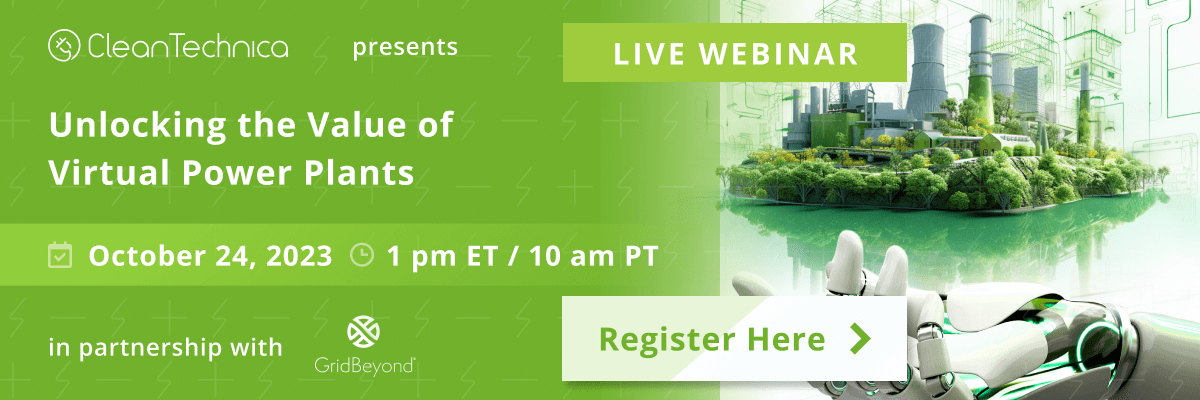Sign up for daily news updates from CleanTechnica on email. Or follow us on Google News!
In a number of recent articles, I’ve seen signs of trouble on the horizon for the EV transition. GM’s putting off EV pickup production due to “evolving” demand for EVs. Ford is also cutting a shift at a plant building F-150 Lightings due to “changing” EV demand and inventory of the trucks piling up at dealers. So, if you read the news, it might look like EV sales are going off a cliff.
But that’s not really what we’re seeing here. When you see companies delaying plans and temporarily cutting shifts, it’s more of a sign that the sales didn’t meet the predicted demand. These companies prepared for faster sales, and the sales didn’t rise as quickly as they had hoped. Despite not meeting automaker expectations, it’s also still true that more EVs are selling than ever before.
So, while it’s not tragic news, it’s still bad news, and it’s bad news that the whole EV industry and enthusiast base need to think long and hard about. In this article, I’m going to explore several possible causes for these disappointing sales and how we can address each of them.
The #1 Problem Is Price
Let’s rewind to 2022, when GM was singing a very different tune. Bolt sales for the year had been absolutely insane, both for the Bolt and EUV variants. So, the company was going to double Bolt production for 2023, and then the company was going to end production at the end of 2023. This led to a lot of disappointment, which led to GM announcing that the Bolt would come back again later.
Based on these record sales, GM probably thought the company could write its own ticket with EVs, but the executives that predicted huge sales for upcoming EVs may have been comparing apples to oranges.
Keep in mind that the Bolt was available for under $30,000 with no tax credits. Revamped credits brought the base price closer to $20,000 for buyers who had the tax liability to actually take advantage of it, and starting January 1st, the tax credit can come off the sales price, regardless of income. So, the sales for that car were quite strong.
The plant where GM had planned to ramp up Silverado EV production was the very same plant Bolts and EUVs were coming from, and GM needed the room for Ultium vehicles. But, what’s replacing the Bolt? A $105,000 electric pickup truck? I don’t know about you, but I think the math on that is pretty simple. A vehicle that costs six figures is going to be much harder to sell than a vehicle that costs around 1/5 the price.
Outside of the Orion plant, GM’s other EVs aren’t much cheaper (and sometimes aren’t at all). The Blazer EV (at least what you can buy right now) starts at almost $57,000. The Equinox EV is supposed to start at $30,000, but people seriously doubt that after cheaper versions of the Blazer got axed. The doubt is such that there’s even a petition asking GM to stick to its word.
One temporary possibility to keep EV interest moving in 2023-24 would be for GM to produce the Bolts for a little longer, but I’m still waiting to hear back from them about whether that’s a possibility.
As far as Ford goes, there’s just not a cheaper EV to compare sales to. Slowing sales, despite lowered prices, shows that demand for the company’s more expensive EVs (compared to the last Bolts and EUVs selling now) isn’t growing as fast as predicted.
Even Tesla’s Technoking or whatever he identifies as these days thinks the company has achieved all of the sales for the Model Y that are financially possible right now, because people who can’t afford the vehicle simply can’t afford the vehicle. So, the only reasonable conclusion is that lower-priced models are needed to have more growth, and Tesla can’t escape that fact, either.
So, automakers had better figure out some more affordable EVs if they want to remain relevant.
Charging Is A Big Problem
Even if everyone wanted to buy $50,000 and up EVs the same as they bought $25,000 EVs, the other big problem the non-Tesla EV industry faces is charging, and that’s probably affecting demand in two big ways.
First off, the situation with CCS charging networks has gotten worse over time. Electrify America’s early stations did OK for years, but the sudden onslaught of new EV drivers in the last year or two showed that the parts in early stations weren’t good for heavier use. It’s still pretty rare to get fully stranded in a CCS car, but chargers often don’t work the first time and it’s becoming more common to wait in line behind other EV drivers because half the stalls are down at a given site.
Automakers couldn’t see a fast way out of this problem, so one by one most of them announced that they’re switching to Tesla’s NACS connector and buying access to the Supercharger network. So, that’s probably causing some people to delay buying until next year because they want a better charging experience.
But, EV enthusiasts are partly to blame. The truth of these charging problems is bad enough, but I’ve seen many enthusiasts (especially Tesla enthusiasts) heavily exaggerate how bad CCS charging is. Talking to actual CCS vehicle owners, it’s still a big problem, but people can generally road trip. Those who want to see Tesla dominate the industry (because they own the stonk) gleefully tell their buddies all about how “legacy auto” is impossible to drive across the country in. But, instead of buying a Tesla, at least some of their friends and followers online decided to just not buy an EV right now.
Charging problems need to be fixed, for sure. But people lying about the charging problems need to knock it off if they really care about “the mission.” FUD is FUD.
Neither Of These Problems Can Be Fixed Quickly
I wish there was a quick way to fix all of the broken chargers and get EV prices down to where they’ll sell as fast as GM and Ford (and to some extent Tesla) had hoped. But getting a new low-priced car out there isn’t cheap or fast and the broken chargers are going to need better parts that just aren’t available right now in many cases.
This era of growing pains is probably going to take a year or two to get past, at minimum. Automakers are going to have to abandon plans to start with the most profitable and expensive EVs, while the charging network needs to greatly improve.
Featured image provided by GM.
Have a tip for CleanTechnica? Want to advertise? Want to suggest a guest for our CleanTech Talk podcast? Contact us here.
EV Obsession Daily!
I don’t like paywalls. You don’t like paywalls. Who likes paywalls? Here at CleanTechnica, we implemented a limited paywall for a while, but it always felt wrong — and it was always tough to decide what we should put behind there. In theory, your most exclusive and best content goes behind a paywall. But then fewer people read it!! So, we’ve decided to completely nix paywalls here at CleanTechnica. But…
Thank you!
Tesla Sales in 2023, 2024, and 2030
CleanTechnica uses affiliate links. See our policy here.





